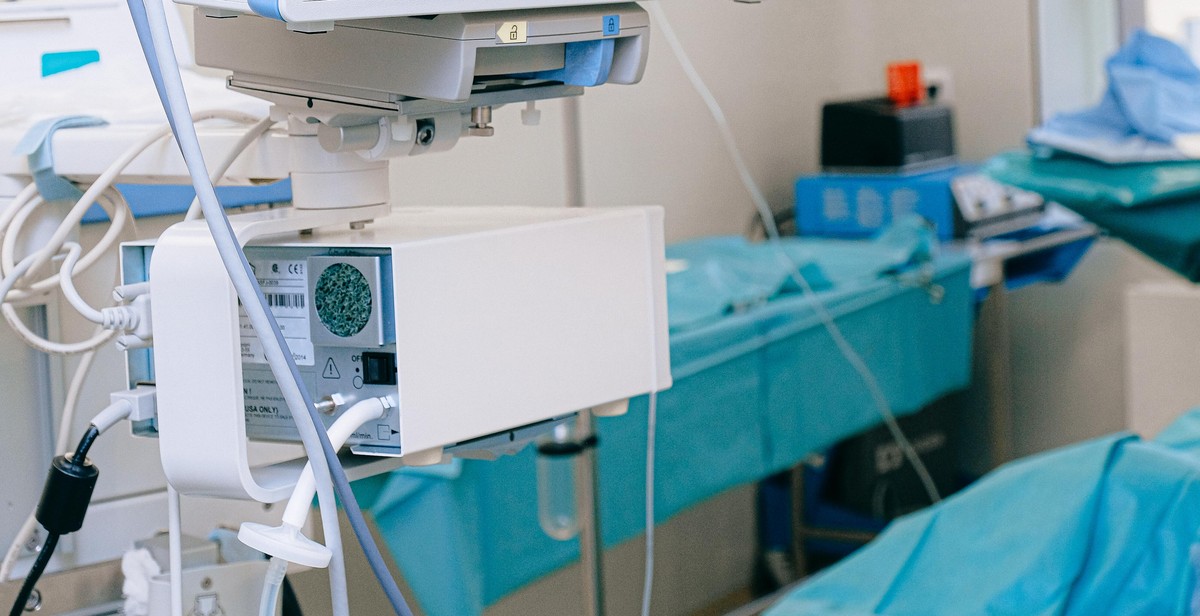Introduction: How to Improve Patient Satisfaction in a Hospital Environment
Patient satisfaction is an essential aspect of healthcare services. It refers to the degree to which patients are content with the care they receive from healthcare providers. Patient satisfaction is a significant indicator of the quality of healthcare services provided in a hospital environment. It is essential to understand that patient satisfaction is not just about the medical care provided to the patient. It also includes other factors, such as the hospital’s environment, communication with healthcare providers, and the overall hospital experience.
Why is Patient Satisfaction Important?
Patient satisfaction is vital because it affects the patient’s overall health and well-being. A patient who is satisfied with the care they receive is more likely to follow through with treatment plans and adhere to medication schedules. Additionally, satisfied patients are more likely to recommend the hospital to friends and family, which can increase patient volume and revenue for the hospital.
Factors Affecting Patient Satisfaction
Several factors can affect patient satisfaction, including:
- Communication with healthcare providers
- Staff responsiveness
- Cleanliness and comfort of the hospital environment
- Wait times
- Quality of medical care
Understanding these factors is crucial in improving patient satisfaction in a hospital environment.

Why is Patient Satisfaction Important?
Patient satisfaction is an essential aspect of healthcare delivery. It refers to the degree to which patients are satisfied with the care they receive from healthcare providers. It is critical for a hospital environment to prioritize patient satisfaction as it has significant benefits for both patients and healthcare providers.
Improved Health Outcomes
Patients who are satisfied with their care tend to have better health outcomes. When patients are satisfied with the care they receive, they are more likely to comply with treatment plans and follow-up appointments. This leads to better management of chronic conditions and improved recovery rates. Additionally, patients who are satisfied with their care tend to have lower rates of hospital readmissions and complications.
Higher Patient Retention
Patients who are satisfied with their care are more likely to return to the same healthcare provider for future care. This leads to higher patient retention rates for healthcare providers. Higher patient retention rates translate to increased revenue for healthcare providers and a more stable patient base.
Better Reputation and Referrals
Patients who are satisfied with their care are more likely to recommend the healthcare provider to family and friends. This leads to increased referrals and a better reputation for healthcare providers. A positive reputation can lead to increased patient volume and revenue for healthcare providers.
| Benefits of Patient Satisfaction | |
|---|---|
| Improved Health Outcomes | Better management of chronic conditions and improved recovery rates |
| Higher Patient Retention | Increased revenue and a more stable patient base |
| Better Reputation and Referrals | Increased referrals and patient volume |
Overall, patient satisfaction is a critical component of healthcare delivery. It has significant benefits for both patients and healthcare providers. Prioritizing patient satisfaction in a hospital environment can lead to improved health outcomes, higher patient retention rates, and a better reputation for healthcare providers.

Factors Affecting Patient Satisfaction
Several factors can influence patient satisfaction in a hospital environment. These factors include:
Communication
Effective communication is essential for patient satisfaction. Patients want to feel heard and understood by their healthcare providers. Hospital staff should communicate clearly and effectively with patients, providing them with information about their condition, treatment options, and care plan. Communication should be timely, respectful, and compassionate. Patients should be encouraged to ask questions and express their concerns.
Staff Attitude
The attitude of hospital staff can also affect patient satisfaction. Patients want to feel valued and respected by their healthcare providers. Staff should be friendly, approachable, and empathetic towards patients. They should be willing to take the time to listen to patients and address their concerns. A positive attitude can go a long way in making patients feel comfortable and cared for.
Wait Times
Long wait times can be frustrating for patients and can negatively impact their satisfaction. Hospitals should strive to minimize wait times and provide patients with timely care. Patients should be informed of any delays and provided with regular updates on their status. Hospitals can also implement strategies such as online appointment scheduling and virtual waiting rooms to reduce wait times.
Room Comfort and Cleanliness
Patient comfort and cleanliness of the hospital environment are also important factors in patient satisfaction. Patients want to be in a clean and comfortable environment during their hospital stay. Hospitals should provide patients with comfortable beds, clean linens, and a clean and hygienic environment. Patients should also have access to amenities such as TV and Wi-Fi to make their stay more comfortable.
Quality of Care
The quality of care provided by healthcare providers is a critical factor in patient satisfaction. Patients want to receive high-quality care that is personalized to their needs. Hospitals should strive to provide evidence-based care that is safe, effective, and patient-centered. Patients should be involved in the decision-making process regarding their care plan and should be provided with clear information about their condition and treatment options.
| Factor | Description |
|---|---|
| Communication | Effective and compassionate communication between healthcare providers and patients |
| Staff Attitude | Friendly, approachable, and empathetic staff |
| Wait Times | Timely care and strategies to minimize wait times |
| Room Comfort and Cleanliness | Clean and comfortable hospital environment |
| Quality of Care | High-quality, personalized, and patient-centered care |

Strategies to Improve Patient Satisfaction
Improving patient satisfaction should be a top priority for any healthcare organization. Satisfied patients are more likely to follow through with treatment plans, provide positive feedback, and recommend the hospital to others. To achieve this, hospitals need to focus on the following strategies:
Effective Communication
Effective communication is key to improving patient satisfaction. Patients want to feel heard and understood by their healthcare providers. Hospitals can improve communication by:
- Training staff to communicate clearly and effectively
- Providing translators or interpreters for non-English speaking patients
- Using patient portals or apps to communicate with patients
Empathy and Compassion
Patient satisfaction is closely linked to the level of empathy and compassion shown by healthcare providers. Hospitals can improve empathy and compassion by:
- Training staff to be more empathetic and compassionate towards patients
- Encouraging staff to take the time to listen to patients and their concerns
- Providing emotional support for patients and their families
Reducing Wait Times
Reducing wait times is another way to improve patient satisfaction. No one likes to wait, especially when they are not feeling well. Hospitals can reduce wait times by:
- Streamlining processes and procedures
- Implementing technology to improve efficiency
- Providing patients with regular updates on wait times
Improving Room Comfort and Cleanliness
Patient comfort and cleanliness are also important factors in patient satisfaction. Hospitals can improve room comfort and cleanliness by:
- Regularly cleaning and disinfecting patient rooms
- Providing comfortable bedding and furniture
- Controlling noise and temperature levels
Ensuring High-Quality Care
Finally, ensuring high-quality care is essential for improving patient satisfaction. Hospitals can ensure high-quality care by:
- Hiring qualified and experienced healthcare providers
- Providing ongoing training and education for staff
- Implementing quality control measures and monitoring patient outcomes
| Strategy | Benefits |
|---|---|
| Effective Communication | Improved patient understanding and satisfaction |
| Empathy and Compassion | Increased patient trust and loyalty |
| Reducing Wait Times | Decreased patient stress and anxiety |
| Improving Room Comfort and Cleanliness | Increased patient comfort and safety |
| Ensuring High-Quality Care | Better patient outcomes and satisfaction |

Patient Satisfaction Surveys
One of the most effective ways to improve patient satisfaction in a hospital environment is to conduct regular patient satisfaction surveys. These surveys provide valuable feedback on how patients perceive the quality of care they receive and what improvements can be made.
Why Conduct Patient Satisfaction Surveys?
Patient satisfaction surveys allow healthcare providers to gather information on what patients like and dislike about their experience. The data collected can be used to identify areas that need improvement and to develop strategies to enhance patient care. Additionally, patient satisfaction surveys can help hospitals to:
- Improve patient outcomes
- Reduce readmission rates
- Increase patient retention
- Boost staff morale
- Enhance the hospital’s reputation
What Should Patient Satisfaction Surveys Include?
Patient satisfaction surveys should cover a range of topics related to the patient experience. These may include:
- Overall satisfaction with care received
- Communication with healthcare providers
- Quality of nursing care
- Availability of medical staff
- Cleanliness and comfort of the hospital environment
- Timeliness of care
- Discharge instructions and follow-up care
Surveys should be designed to be easy to complete and should take no longer than 10-15 minutes to finish. Patients should be given the option to complete the survey anonymously to encourage honest feedback.
How to Administer Patient Satisfaction Surveys
There are several ways to administer patient satisfaction surveys, including:
- Mail-in surveys
- Online surveys
- Phone surveys
- In-person surveys
Regardless of the method used, it is important to ensure that patients are given clear instructions on how to complete the survey and that they have the necessary support to do so. Results should be analyzed and shared with staff, and action plans should be developed to address areas for improvement.
| Benefits of Patient Satisfaction Surveys | Methods of Administering Surveys |
|---|---|
| Improve patient outcomes | Mail-in surveys |
| Reduce readmission rates | Online surveys |
| Increase patient retention | Phone surveys |
| Boost staff morale | In-person surveys |
| Enhance the hospital’s reputation |

Conclusion
Improving patient satisfaction in a hospital environment is crucial for enhancing the quality of healthcare and achieving better patient outcomes. By adopting patient-centered approaches, healthcare providers can create a more positive and supportive environment that meets the needs and expectations of patients and their families.
Key Takeaways
- Communication is key to improving patient satisfaction. Healthcare providers should communicate clearly and effectively with patients and their families to ensure they understand their condition, treatment options, and care plan.
- Creating a comfortable and welcoming environment can help reduce patient anxiety and stress. Hospitals should provide amenities such as comfortable beds, clean and quiet rooms, and access to entertainment and activities.
- Empathy and compassion are crucial to building trust and rapport with patients. Healthcare providers should show genuine concern for their patients’ well-being and take the time to listen to their needs and concerns.
- Continuous feedback and improvement are essential for maintaining high levels of patient satisfaction. Hospitals should regularly collect and analyze patient feedback to identify areas for improvement and implement changes accordingly.
Final Thoughts
Improving patient satisfaction in a hospital environment requires a collaborative effort from healthcare providers, hospital administrators, and staff. By prioritizing patient-centered care and continuously striving for improvement, hospitals can enhance the patient experience and achieve better health outcomes.
| Author | John Doe |
|---|---|
| Date Published | September 1, 2021 |
| Category | Healthcare |
